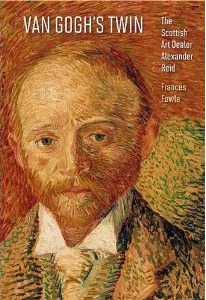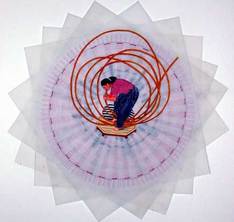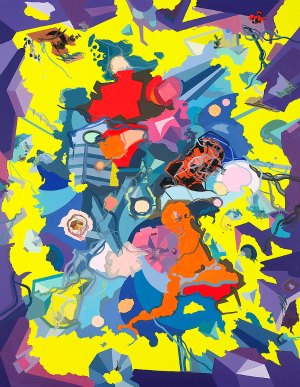Have you ever heard of Alexander Reid, 1854-1928? Me, neither — at least until recently.
 But he deserves a place in the annals of important gallery owners and among friends of van Gogh. Reid was not only a friend to Vincent, but also a look-alike. He was Whistler’s friend, too.
But he deserves a place in the annals of important gallery owners and among friends of van Gogh. Reid was not only a friend to Vincent, but also a look-alike. He was Whistler’s friend, too.
This is all laid out in a book I just learned about (hat tip to Art Fix Daily) called Van Gogh’s Twin: The Scottish Art Dealer Alexander Reid. It was published recently by the National Galleries of Scotland in the U.K. and, Amazon says, will be available in the U.S. in March.
According to the author, Frances Fowle, who is a senior curator in French art at the NGS, Reid was an extremely influential dealer, the first British dealer to take a serious interest in Impressionist art. Based in Glasgow, then the “second city of the British Empire,” he also supported the “Glasgow Boys” (who recently wowed visitors to the Kelvingrove Art Gallery and Museum there) and the “Scottish Colourists,” profoundly influencing taste in Scotland, which in those days was bubbling economically. Because of him, many rich Scottish merchants purchased works by Impressionist “well in advance of their English contemporaries.”
Last week, Scotland’s Herald wrote about the book, leading off with a story about a proposed suicide:
You are a young Scottish artist and art dealer, living in Paris in the late 19th century. You are sharing an apartment with one of the greatest, and one of the most tortured, painters of the modern age. But you are unhappy in love, and, one night, you make the mistake of telling him some of your woes. He empathises with you. The painter, in this case named Vincent van Gogh, feels so sorry for you, in fact, that he suggests a suicide pact. What would you do? If, like the very intelligent Reid, one of the most influential Scottish art dealers of the past 100 years, you smile sweetly, say it’s a wonderful idea – then run for the hills.
As Fowle says in the article, Reid’s relationship with van Gogh, while colorful, is not the meat of the book. Reid could “make” artists, but he, Reid, too, missed the significance of van Gogh’s work: “He once said to William Burrell’s daughter: ‘I could have bought any work by van Gogh for £5 at the time, but I didn’t realise what an important artist he was going to be’,” Fowle writes.
It seems to be a fascinating story, and Fowle tells it all in fewer than 200 pages.


 Makes sense — on several levels, including the snowy weather shared by Waltham, MA. and East Lansing, MI. (I couldn’t find exact statistics, but nearby Boston averages 43 in. of snow each winter and nearby Lansing gets 48 in,)
Makes sense — on several levels, including the snowy weather shared by Waltham, MA. and East Lansing, MI. (I couldn’t find exact statistics, but nearby Boston averages 43 in. of snow each winter and nearby Lansing gets 48 in,) For his part, Rush said:
For his part, Rush said: Deciding what to say here about Peter was not as easy as I thought. Certainly, he was one of the warmest, nicest museum directors I’ve ever known. His accomplishments at MFAH are legend, but best left for a Houstonian, who would know more details, to say.
Deciding what to say here about Peter was not as easy as I thought. Certainly, he was one of the warmest, nicest museum directors I’ve ever known. His accomplishments at MFAH are legend, but best left for a Houstonian, who would know more details, to say.  The exhibit, which opened Dec. 5, is keyed to the Super Bowl, which will take place in February at the Cowboys Stadium — a first for Dallas, and thus a big deal. Lucky for the museum — others have tried outreach to sports fans by pandering — the $1.2 billion
The exhibit, which opened Dec. 5, is keyed to the Super Bowl, which will take place in February at the Cowboys Stadium — a first for Dallas, and thus a big deal. Lucky for the museum — others have tried outreach to sports fans by pandering — the $1.2 billion  There’s more: According to
There’s more: According to